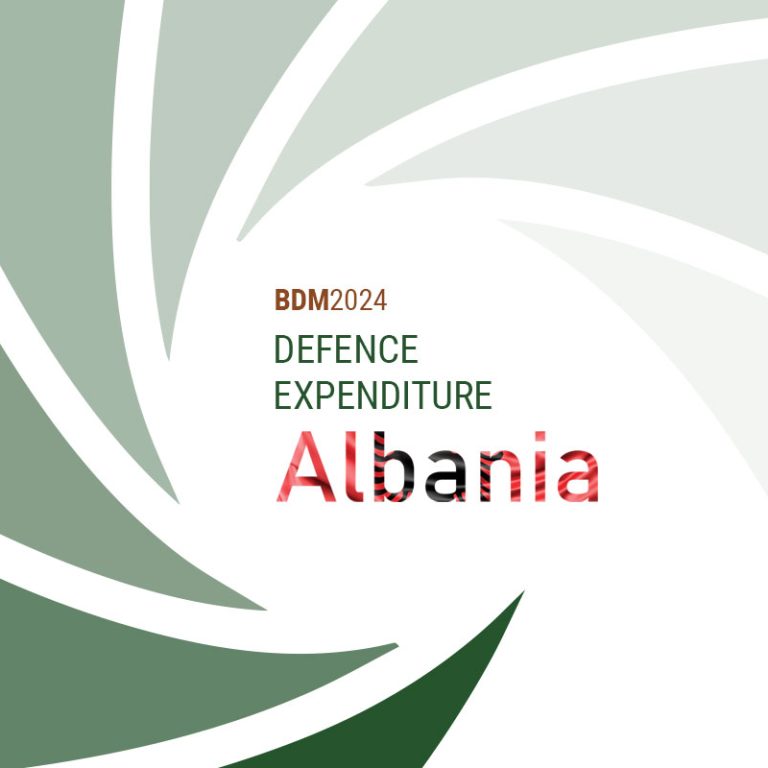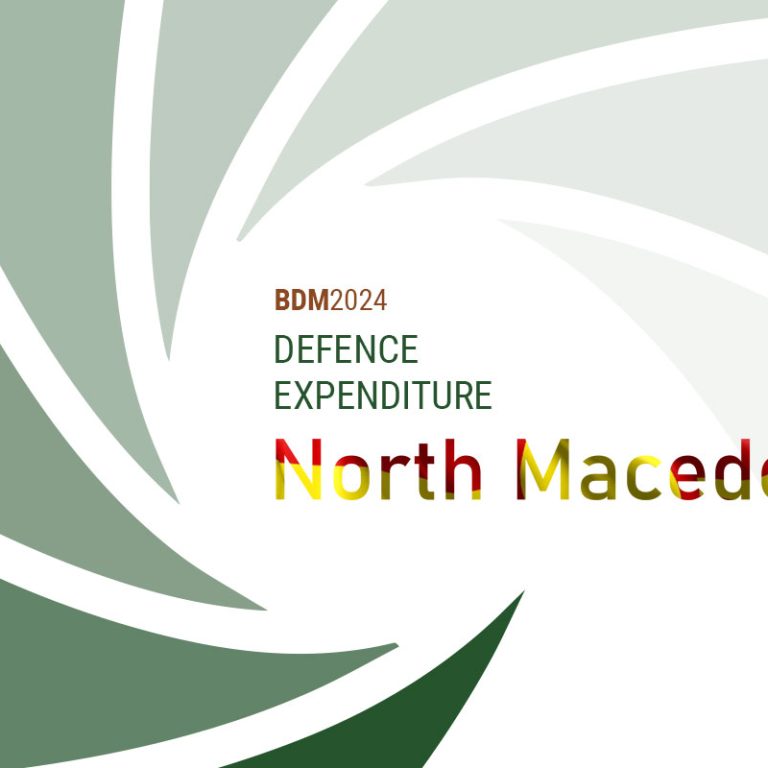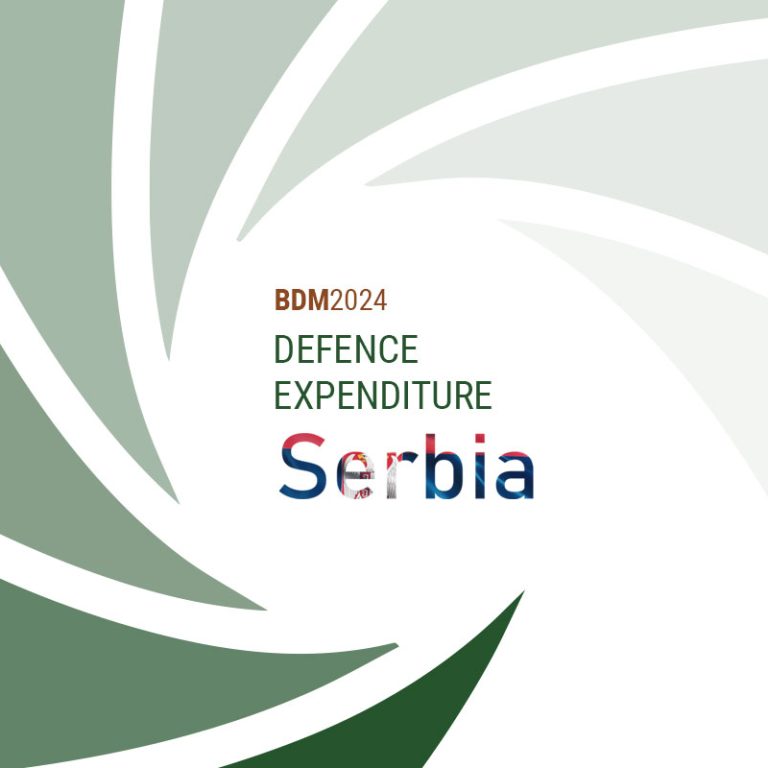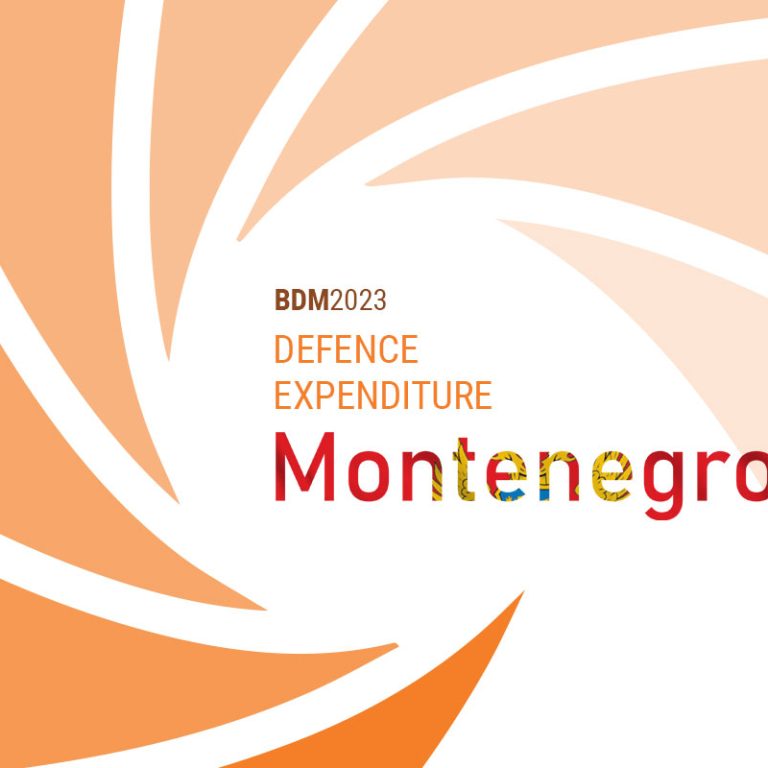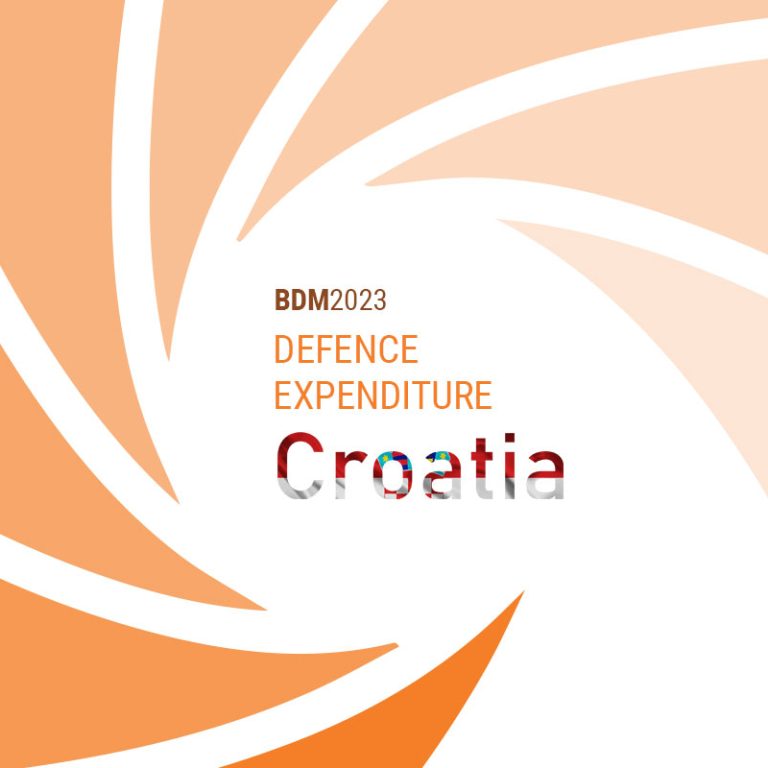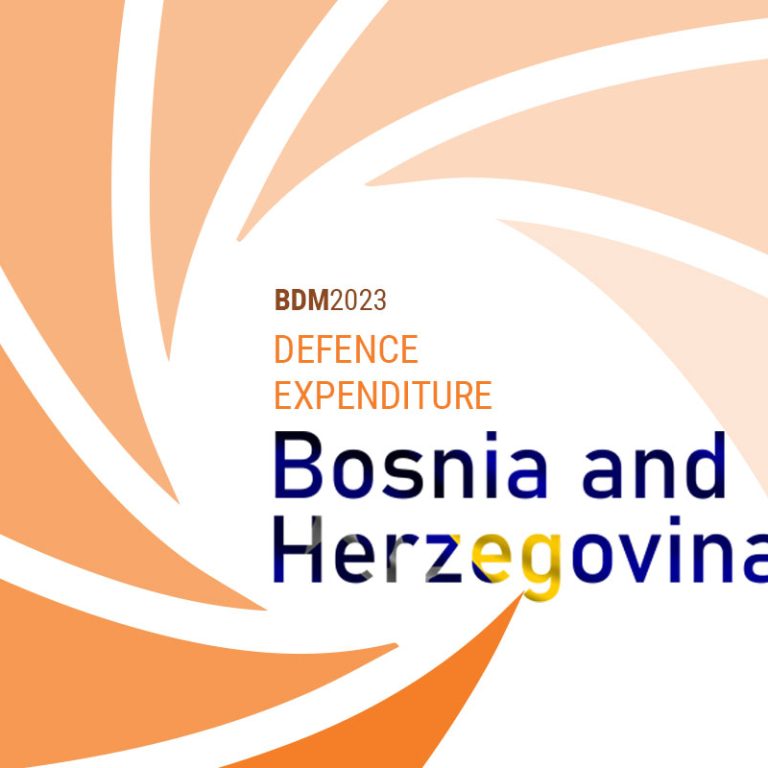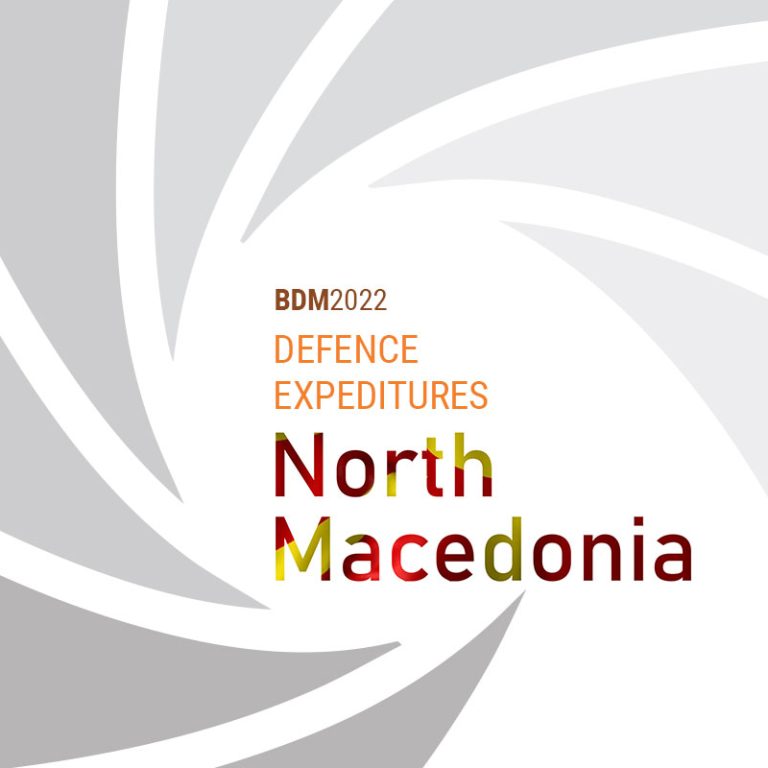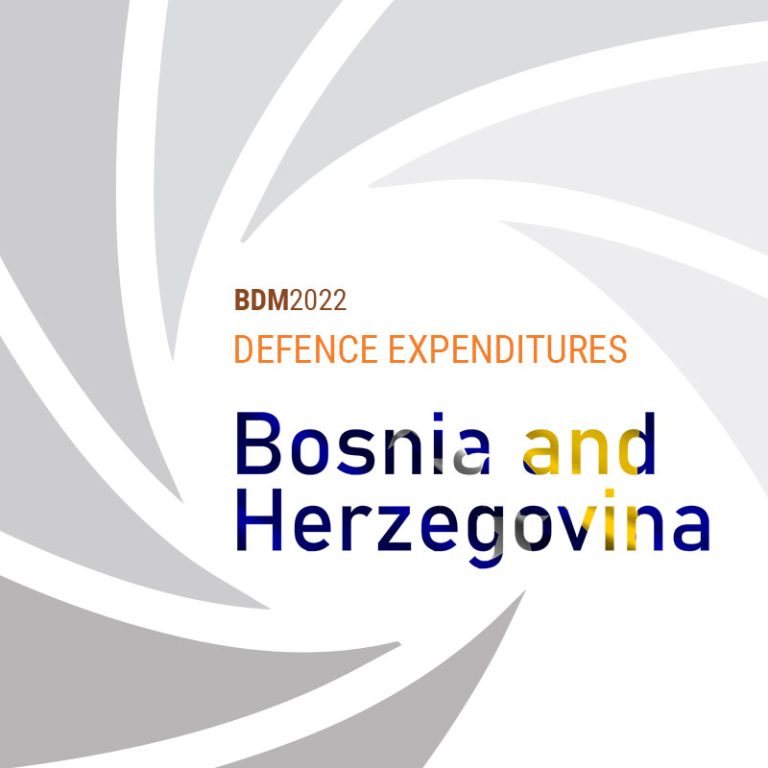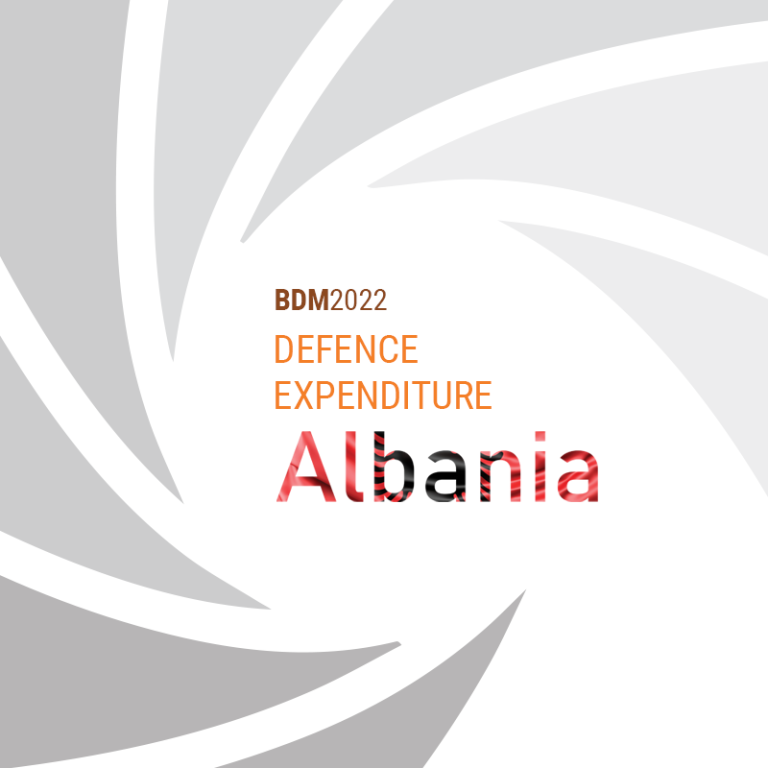Defence Expenditure
Among the Balkan countries, Serbia still has the highest defence spending as the share of GDP (2,0%). None of the NATO member states in the region has reached the 2% GDP defence spending threshold in 2023. Although Albania and North Macedonia initially planned the budget for 2023 to reach the 2% GDP threshold, the actual expenditure in both countries appears to be below 2% of their GDP. Bosnia and Herzegovina has the lowest military expenditure in the region, maintaining it below 1% of GDP.
All the countries in the Balkans publish their defence expenditure as part of government budgets and balance sheets. However, different countries use different methods to present their defence expenditure, usually providing only the aggregated sums of larger categories and thus making it difficult to isolate and scrutinize individual costs. Albanian MoD budget is the least transparent in the region, showing only several general categories, while Croatian is the most transparent and detailed.
The comparison below is based on the balance sheets from 2022, because most of the Balkan countries have not yet adopted their balance sheets for 2023. As in the previous years, Bosnia and Herzegovina’s expenditure on personnel is the largest, while Croatia and North Macedonia significantly decreased the percentage of defence budget spent on personnel comparing to the year 2020. Albania was excluded from this comparison because of methodological reasons (explanation can be found in the chapter on defence expenditure of Albania).
Apart from Albania, defence expenditure of Western Balkan NATO members reported to the Alliance differs to a great extent from the government balance sheets. The differences are predominantly present due to the NATO expenditure methodology that includes military pensions, which are not part of the funds for Ministries of Defence in national budgets. The largest discrepancy between Ministry of Defence budget and the budget reported to NATO appears in the case of Montenegro.
The research team used publicly available data on defence expenditure (MoDs expenditure) that were included in the government expenditure documents. Defence expenditure was extracted from balance sheets (i.e. actual spending) wherever possible, while the most recent Budget Law amendments were taken into account for the year 2023. Data for 2024 are plans, based on initial budget laws. Letter p is used to mark plans in the graphs. Information on GDP in selected countries was taken from the database of the International Monetary Fund.
Category titled Other costs includes operations, maintenance, infrastructural investments, etc. and could not be divided into separate categories because of different national budgets. Albania is not included in the comparison of the defence budgets structure because its budget and balance sheets show only highly aggregated categories of costs; hence, it was impossible to derive personnel and arms and equipment spending comparable to other countries. For more information on the Albanian defence budget structure reported to NATO, see the national chapter.
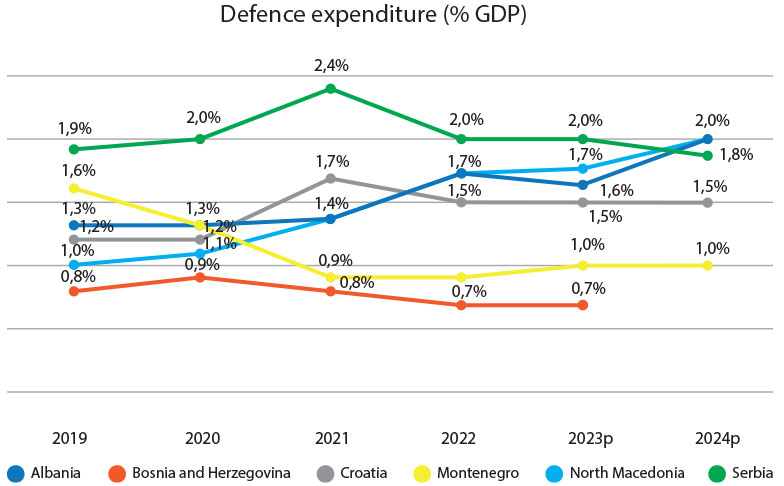
Data for 2022 and 2023 are based on the last changes in the 2022 budgets and the initial budget laws for 2023.
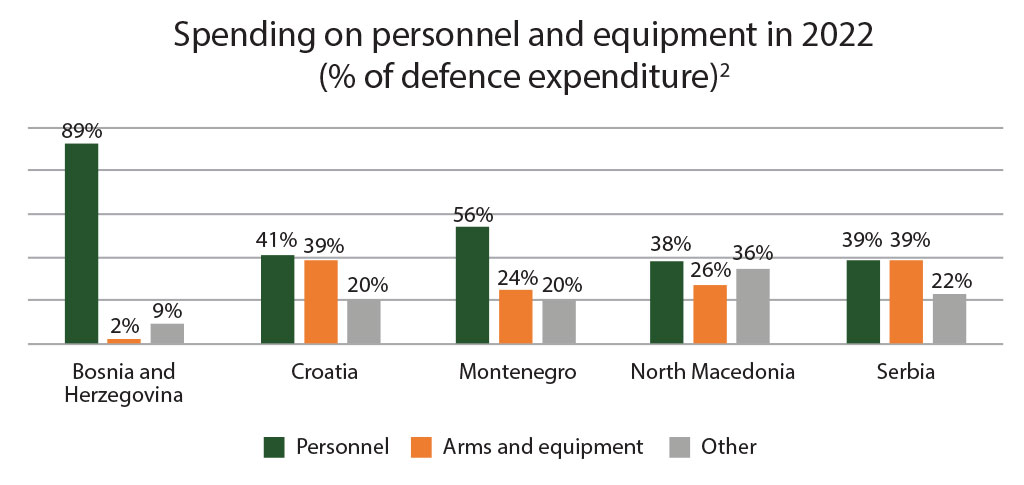

Even though military expenditure in the Balkans region experienced a slow increase in the course of the last five years, it was only Serbia that surpassed the 2% GDP spending threshold. Albania and North Macedonia have reached the 2% threshold in the planned budget for 2023.
Serbia gradually increased its defence spending since 2016 and, along with Croatia, experienced a sizeable leap in 2021. Bosnia and Herzegovina has the lowest military expenditure in the region, maintaining it below 1% of GDP. 1
All the countries in the Balkans publish their defence expenditure as part of government budgets and balance sheets of total government expenditure. However, different countries use different methods to present their defence expenditure, usually providing only the aggregated sums of larger categories, which makes it difficult to isolate and scrutinise individual costs. Albanian MoD budget is the least transparent in the region, showing only several general categories, while Croatian is the most transparent and detailed.
As regards budget structure, if we look at the 2021 expenditure, Bosnia and Herzegovina stands out as a country that spent almost 90% of its defence budget on personnel, whereas Serbia’s portion of the budget spent on personnel amounted to 35%. Serbia and Croatia spend more than 20% of their defence budgets on arms and equipment – Serbia since 2017, when it started its modernisation process, and Croatia since 2021, when it purchased Dassault Rafale fighter jets.
With the exception of Albania, Defence expenditure of Western Balkan NATO members reported to the Alliance differs to a great extent when compared to the government balance sheets. The differences are predominantly caused by the NATO expenditure methodology that includes military pensions, which are not part of the funds for Ministries of Defence in national budgets.
The research team used publicly available data on defence expenditure (MoDs expenditure) that were included in the government expenditure documents. Defence expenditure was extracted from balance sheets (i.e. actual spending) wherever possible, while the most recent Budget Law amendments were taken into account for the year 2022. Data for 2023 are plans, based on initial budget laws. In the charts, letter p is used to mark plans. Information on GDP in selected countries was taken from the database of the International Monetary Fund. Defence spending is presented in EUR, calculated based on the exchange rate of the national currencies at the end of the given year.
Category titled Other costs includes operations, maintenance, infrastructural investments, etc. and could not be divided into separate categories because of different national budgets. Albania is not included in the comparison of the defence budgets structure because its budget and balance sheets show only highly aggregated categories of costs; hence, it was impossible to derive personnel and arms and equipment spending comparable to other countries. For more information on the Albanian defence budget structure reported to NATO, see the national chapter.

Data for 2022 and 2023 are based on the last changes in the 2022 budgets and the initial budget laws for 2023.

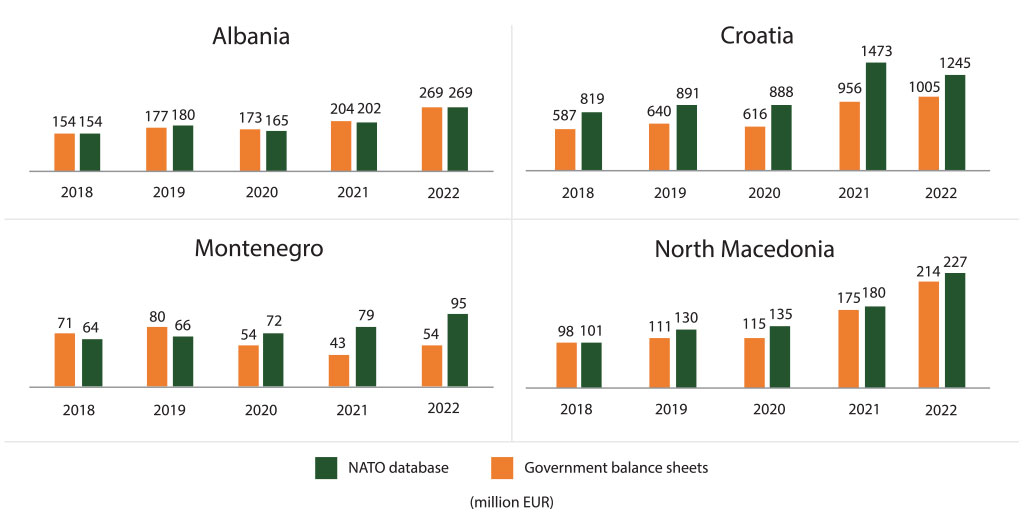
Even though military expenditure in the Balkans region experienced a slow increase in the course of the last five years, only Serbia has surpassed the 2% GDP spending threshold.
Serbia gradually increased its defence spending since 2016 and, along with Croatia, experienced a sizeable leap in 2021. Bosnia and Herzegovina has the lowest military expenditure in the region, maintaining it below 1% of GDP. 1
All the countries in the Balkans publish their defence expenditure as part of government budgets and balance sheets of total government expenditure. However, different countries use different methods to present their defence expenditure, usually providing only the aggregated sums of larger categories and thus making it difficult to isolate and scrutinize individual costs. Albanian MoD budget is the least transparent in the region, showing only several general categories, while Croatian is the most transparent and detailed.
As regards the budget structure, if we look at the 2020 expenditure, Bosnia and Herzegovina stands out by spending almost 90% of its defence budget on personnel, whereas Serbia’s portion of the budget going to personnel amounts to 35%. Only Serbia spent more than 20% of its defence budget on arms and equipment between 2017 and 2020. It should be highlighted that Serbia and Croatia significantly upped their planned arms and equipment expenditure in 2021, and based on plans, it should be 47% in Serbia, and 44% in Croatia.
With the exception of Albania, defence expenditure of Western Balkan NATO members reported to the Alliance differs to a great extent from the government balance sheets. The differences are predominantly present due to the NATO expenditure methodology that includes military pensions, which are not part of the funds for Ministries of Defence in national budgets.
The research team used publicly available data on defence expenditure (MoDs expenditure) that were included in the government expenditure documents. Defence expenditure was extracted from balance sheets (i.e. actual spending) wherever possible, while the most recent Budget Law amendments were taken into account for the year 2021. Data for 2022 are plans, based on initial budget laws. Letter p is used to mark plans in the graphs. Information on GDP in selected countries was taken from the database of the International Monetary Fund.
Category titled Other costs includes operations, maintenance, infrastructural investments etc and could not be derived into separate categories due to different national budgets. Albania is not included in the comparison of the defence budgets structure, because its budget and balance sheets show only highly aggregated categories of costs, hence, it was impossible to derive personnel and arms and equipment spending comparable to other countries. For more information on Albanian defence budget structure reported to NATO, see national chapter.






